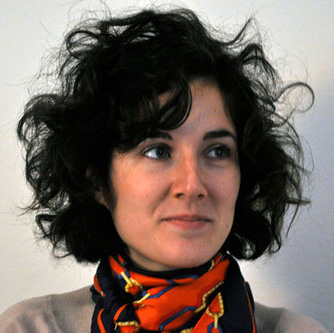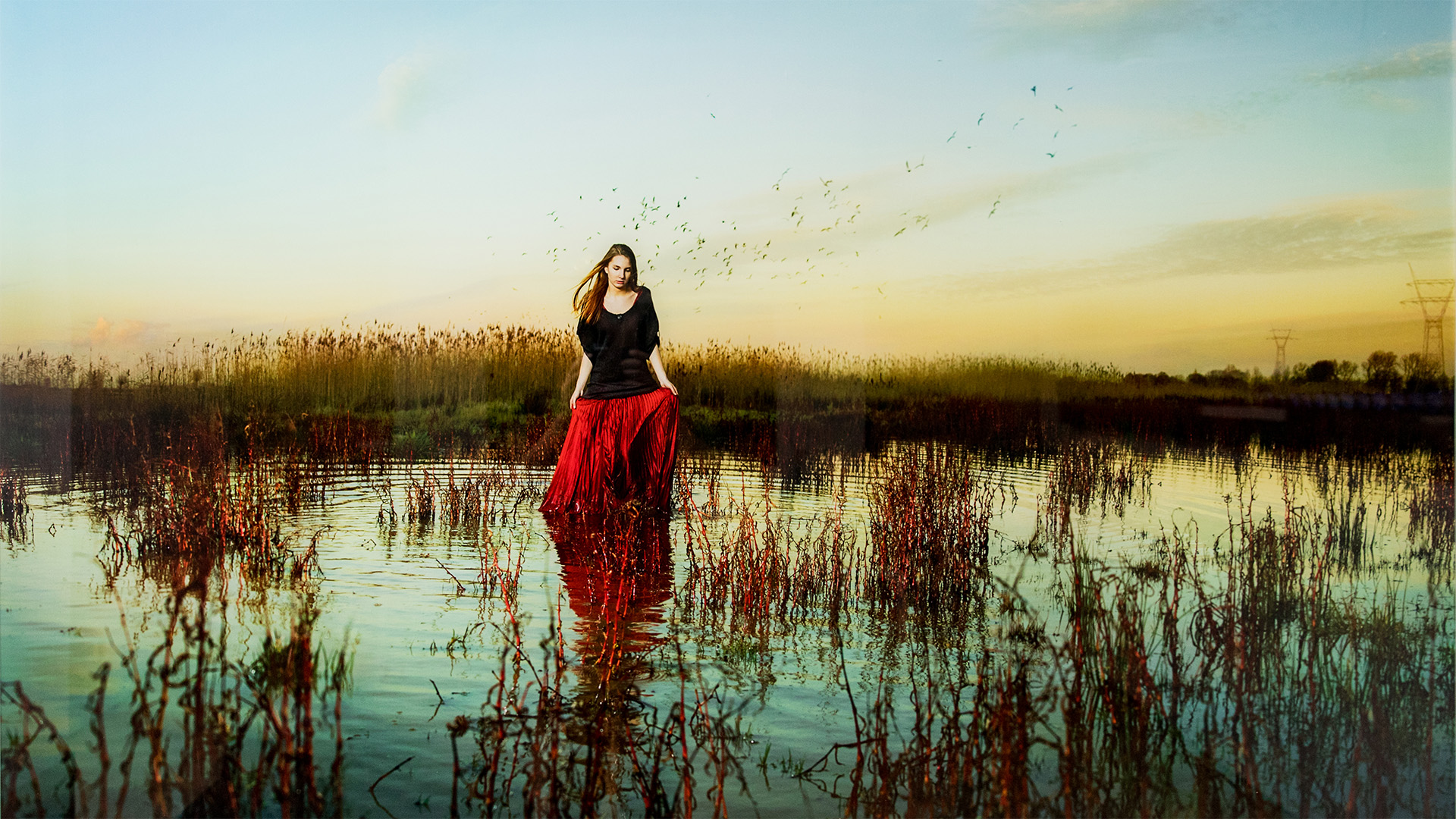Blog
How to Construct Bodies?
31 January 2019 Thu
Universal Everything's Fluid Bodies exhibition reflects on the moral and social implications of technology. The propositions of Fluid Bodies, which uses technology as a field in which the word ‘techne’ and ‘logos’, ie craft and expression come together, could be read as images from the future—the existing technical potentials can be transformed in real time.

MERVE ÜNSAL
merve.unsal@gmail.com
Portrait II is a work of art history. The digital portrait, which takes Rembrandt as a starting point, starts with dark tones, digital brush strokes moving on the screen cause a human face to appear in front of our eyes over the duration of the piece. It is possible to read this work on two layers. The artistic aspect, which Universal Everything also refers to, may be adapted to the present day through a historical reading; art and image production as actions executed by methods and tools invented by individuals. By digitizing an action that is both as subjective and representative as painting, the work actually refers to how image production has changed in the present. On the other hand, portraits of physical objects such as brushes imitated in the digital world indicate that digital methods may have developed in relation to this objecthood. In other words, although the nature of the worlds and actions in which they exist may be different, it is pointed out that things within the visual world of people may be on a linear plane within the transformation of the people who initiate the processes. They point to the fact that human beings, who construct the process of digital painting and finalizes the process of painting, belong to the same realm. A second layer is Portrait II can be interpreted as the changing human perception in the digitized world. Portrait II also points to a situation related to the human image that was built at the same time as the ‘selfie’ shots transforming how people perceive themselves as many people use selfies as data for plastic surgeons. The digital brush, which we see on the screen, can be seen as a representation of our digital existence which we have constructed both visually and textually for ourselves. Each digital tweet, each photo, every digital image is transformed into a subjective, as well as fictional, construct. And the dark background of Portrait II reminds us of the fact that the feeling of being free from this construction is an illusion; the things we share are as artificial as the brushstrokes, and the things that show the existence of our hands.

Universal Everything, Portrait II, 2018
A dance piece performed inside a CGI hurricane. A lone figure struggles to make his way across a sparse, grassy landscape, seemingly battling the elements as they beat him back. His body starts to decompose, surrendering to invisible physical forces, and he disappears into a cascade of particles. In the same way as Portrait II, the construction of the body as an image showing the artificiality of the body points to the process of subjective construction in our existence. The human figure, who seems to be struggling with something that is invisible, points to the human being's ambiguous, perpetual resistance to everyday life, the feeling of being pushed around by an invisible force. The fact that this power or condition is invisible places the Supreme Believers II as a sentence in which each viewer can interpret it in a different way. The fact that the image is built on a white background in contrast to the dark background of Portrait II reinforces this feeling, making it easier for us to fill that white space with our own demons, angels, fears and needs. While showing the individual alone in this work, it is possible to see this individual as a society which consists of the struggle of these parts with time. Supreme Believers II, which visually digitizes the intensity of being divided into parts and makes it fleeting and tolerable, provides us with a mental image that we can use in daily life.

Universal Everything, Supreme Believers II, 2018
Screens of the Future are scenarios that imagine what technologies currently under development can do in the near future. This room with screens showing short videos can be positioned as a space of possibilities and potentials. Along with the changes that will make daily life easier, making visible the developments that can transform our relationship with the world makes visible the areas where technology could permeate to. The difference in the scales of the screens with scenarios looping one after the other shows that the individual transformation in Portrait II and Supreme Believers II actually work at the same time on different layers, and even the simplest of our actions are transformed by technology. Although the Screens of the Future seem to be trying to push the limits of our imagination, it is actually causing us to question our relationship with technology at the moment. That's why the title of the work is also meaningful. The technological transformation that we experience through screens, or perhaps most visible through screens, is also the medium that drives us to imagine the future.

Universal Everything, Screens of the Future, 2016-2017
Universal Everything places the body and subjectivity in Fluid Bodies as transformed, shifting and process-oriented, slippery objects. While we feel the confusion and curiosity prevailing while visiting the exhibition, we feel that there is a distance between what we see and ourselves, but as we spend time with the works in the exhibition, we have to face the mirror that Universal Everything has shown us by realizing that there isn't actually an arm’s distance that we can take from what we see.
ABOUT THE WRITER
Merve Ünsal is a visual artist based in Istanbul. In her work, she employs text and photography, extending both beyond their form. Ünsal is the founding editor of the artist-driven online publishing initiative m-est.org.



